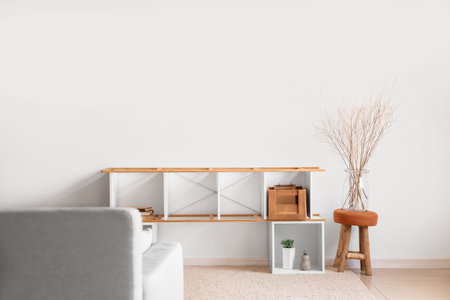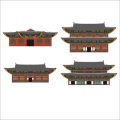Introduction to the Five Elements in Interior Design
The concept of the five elements—wood, fire, earth, metal, and water—has roots deep within ancient philosophies, most notably in Chinese and Eastern traditions. However, as design boundaries blur and cultures intertwine, this elemental approach has found a new resonance within modern British interiors. The essence of the five elements is to create environments that foster balance, wellbeing, and a subtle sense of harmony. In today’s British homes—ranging from Victorian terraces to sleek urban flats—the thoughtful integration of these elements offers more than just aesthetic interest; it invites a mindful way of living that celebrates both tradition and innovation. By understanding the origins and significance of the five elements, homeowners and designers can craft spaces that not only reflect personal style but also nurture a harmonious atmosphere tailored to contemporary British lifestyles.
2. Understanding British Aesthetics and Lifestyle
British interiors have always reflected a unique blend of tradition and innovation, where the influence of heritage meets the pulse of modern living. To achieve harmony when balancing the five elements—wood, fire, earth, metal, and water—it is essential to first understand the core values at the heart of British design: authenticity, comfort, and understated elegance.
Authenticity Rooted in Heritage
The British appreciation for authenticity is deeply embedded in their interiors. This respect for genuine materials and classic craftsmanship ensures that whether it’s a Georgian townhouse or a contemporary London flat, spaces feel honest and lived-in. Designers often favour natural woods, wool textiles, and artisanal ceramics—materials that evoke both history and quality.
Table 1: Key Materials in Traditional vs. Modern British Interiors
| Element | Traditional Application | Modern Adaptation |
|---|---|---|
| Wood | Oak panelling, mahogany furniture | Pale timber floors, minimalist shelving |
| Fire | Open fireplaces with stone surrounds | Sleek gas fires, statement lighting |
| Earth | Terracotta tiles, hand-thrown pottery | Ceramic planters, muted clay finishes |
| Metal | Brass handles, wrought iron beds | Matte black fixtures, brushed steel accents |
| Water | Lead-glazed windows, deep bathtubs | Rain showers, reflective glass tables |
The Pursuit of Comfort
No matter the style epoch, comfort remains at the forefront of British interiors. Think plush Chesterfield sofas, generous scatter cushions, and layered textiles—a tactile palette that invites relaxation. Even within minimalist schemes, soft throws and warm rugs provide cosiness without visual clutter.
The Balance of Understated Elegance
Understated elegance is perhaps the most distinctively British trait in interior design. Rather than overt opulence, homes exude refinement through subtle details: a well-chosen antique mirror, artfully mismatched crockery on open shelves, or a muted colour palette with gentle contrasts. These gestures create an environment that feels curated yet approachable.
Key Principles for Integrating the Five Elements with British Flair:
- Choose honest materials that reveal texture and patina over time.
- Create comfort through layers—fabrics, lighting, and tactile surfaces.
- Embrace restraint; let each element have space to breathe.
- Meld traditional forms with contemporary simplicity for timeless appeal.
- Allow personal stories—heirlooms or local crafts—to enrich the narrative.
This thoughtful balance between old and new shapes interiors that are not only harmonious but also distinctly British in spirit.

3. Applying the Five Elements: Methods and Techniques
When adapting the ancient wisdom of the five elements—wood, fire, earth, metal, and water—to modern British interiors, both tradition and innovation come into play. The UK’s unique climate, landscape, and material heritage offer a rich palette from which to draw inspiration. Below are practical strategies to thoughtfully weave each element into your space.
Wood: Embracing Warmth and Vitality
In British homes, wood brings warmth and life to interiors. Opt for locally sourced oak, ash, or walnut for flooring, beams, or bespoke furniture pieces. Incorporate reclaimed timber for authenticity and sustainability—a nod to heritage while supporting eco-conscious design. Consider painted wood panelling in muted tones for a classic yet contemporary feel that resonates with Georgian and Victorian influences.
Fire: Cultivating Energy and Passion
The element of fire can be introduced through both literal and symbolic means. Traditional fireplaces or modern wood-burning stoves create natural gathering points and infuse spaces with comfort during the damp British winters. Alternatively, use lighting—such as warm-toned lamps, candles, or pendant fixtures—to evoke fire’s energy. Accents in deep reds or burnt orange textiles also echo this element without overwhelming subtle British palettes.
Earth: Grounding Through Texture and Colour
To integrate earth, focus on tactile materials like terracotta tiles in kitchens or hallways, woollen throws sourced from local mills, or stoneware ceramics displayed on open shelves. Earthy paint hues—sage greens, taupes, and soft clays—reflect the rolling British countryside while grounding living spaces in calm stability.
Metal: Creating Clarity and Structure
Introduce metal through ironmongery—door handles, light switches—or statement pieces like brass mirrors or steel shelving units. Heritage metals such as pewter and copper can be found in antique shops across the UK and offer characterful accents. For a contemporary twist, blend matte black finishes with softer metals for balanced contrast.
Water: Encouraging Flow and Tranquillity
Water’s influence is best felt through fluid shapes and calming palettes. Incorporate reflective surfaces—glass tables, mirrored splashbacks—or choose textiles in cool blues and greens reminiscent of Britain’s coastal scenery. Indoor plants not only purify the air but also introduce a sense of gentle movement akin to flowing streams. Where possible, maximise natural light to create an airy sense of openness throughout your home.
By thoughtfully layering these elements with respect for local materials and traditional aesthetics, British interiors can achieve harmony—balancing modern needs with timeless principles rooted in nature.
4. Balancing Modernity with Heritage
Blending the five elements—wood, fire, earth, metal, and water—into modern British interiors requires a sensitive approach that honours both contemporary living and the timeless charm of historical architecture. Many British homes boast period features such as cornices, sash windows, fireplaces, and original floorboards. The key is to introduce each element in a way that complements these features rather than competes with them.
Respecting Architectural Integrity
When integrating the five elements, start by assessing the existing character of your space. Retain and restore period details where possible, using them as a canvas for elemental balance. For example, exposed brickwork or wooden beams can represent wood and earth, while traditional cast-iron radiators or door hardware bring in metal without disrupting heritage appeal.
Methods for Harmonious Integration
| Element | Historic Feature | Modern Touch |
|---|---|---|
| Wood | Original floorboards or timber panelling | Sustainable furniture in clean lines; reclaimed wood accents |
| Fire | Victorian fireplaces or hearths | Contemporary lighting; warm accent colours like ochre or terracotta |
| Earth | Stone window sills; brick walls | Ceramic vases; earthy textiles such as wool or linen throws |
| Metal | Period doorknobs; ironmongery | Brushed brass fixtures; minimalist metal shelving units |
| Water | Stained glass windows; garden views through bay windows | Aquatic art pieces; glass decor reflecting natural light |
Cultural Considerations in Colour and Material Choices
The British penchant for understated elegance can guide your material and colour selections. Opt for muted tones and natural finishes that echo the local landscape—think sage green, stone grey, deep navy, and soft creams. This palette not only bridges modern tastes with classic sensibilities but also fosters a calm and balanced atmosphere aligned with the principles of the five elements.
A Dialogue Between Old and New
The ultimate goal is to create a dialogue between old and new: celebrating British heritage while inviting the energy of all five elements into daily life. By layering modern interventions thoughtfully over historic foundations, your space will feel both authentically British and vibrantly current—an interior that tells its story with every detail.
5. Case Studies: Real British Interiors
Classic Georgian Townhouse in Bath
This elegant Georgian townhouse, nestled within the heart of Bath, serves as a prime example of how the five elements—wood, fire, earth, metal, and water—can be seamlessly interwoven into a period property. The original wooden floorboards and bespoke oak shelving bring warmth and grounding (wood), while an open fireplace framed by sculpted stone introduces both fire and earth. Subtle brass accents throughout the space add a touch of metal, complemented by tranquil blue velvet furnishings that evoke the calming presence of water. Through careful curation, the home achieves a harmonious balance, celebrating British heritage with contemporary flair.
Modern London Flat in Shoreditch
In this modern Shoreditch apartment, the owner opted for a minimalist design that still honours the principles of the five elements. Sleek steel fixtures and chrome kitchen fittings (metal) are softened by lush indoor plants and reclaimed timber furniture (wood). A statement red rug injects vibrant energy (fire), contrasting beautifully with clay-toned ceramics on display shelves (earth). Floor-to-ceiling windows offer views of the Thames, ensuring the element of water is ever-present, both visually and atmospherically. This balanced approach creates a serene urban retreat tailored to contemporary London living.
Cotswold Country Cottage
Embodying rustic British charm, this Cotswold cottage integrates the five elements through natural materials and thoughtful detailing. The exposed stone walls (earth) provide solidity and character, while vintage copper pots and decorative ironwork (metal) enhance visual interest. Handcrafted wooden beams and furniture ground each room (wood), complemented by a crackling wood-burning stove (fire). The gentle trickle of an indoor fountain near the entrance (water) introduces movement and calm. Together, these choices foster a cosy yet invigorating environment steeped in local tradition.
Design Insights from Local Creatives
Across these varied interiors, one common thread emerges: each designer or homeowner has thoughtfully considered how every element can serve both functionally and aesthetically within their space. By referencing local materials, historical context, and personal taste, they exemplify how to achieve elemental balance within distinctly British settings.
Conclusion: Achieving Balance in Everyday Living
These case studies illustrate that balancing the five elements is not about rigid adherence to tradition but rather about interpreting ancient principles through a modern British lens. Whether updating a city flat or restoring a countryside abode, incorporating wood, fire, earth, metal, and water brings depth and vitality to interior spaces—resulting in homes that are not only beautiful but also deeply nurturing.
6. Tips for Creating Your Own Balanced Space
Bringing harmony, wellbeing, and beauty into your British home begins with a thoughtful approach to the five elements—Wood, Fire, Earth, Metal, and Water. Here are practical tips to help you achieve this balance within your interiors:
Start with a Clear Intention
Before making any changes, reflect on what you want to feel in each room. Is it calmness in the living room, energy in the kitchen, or focus in the study? Setting an intention will guide your choices as you layer in elements that promote your desired atmosphere.
Layer Textures and Materials Mindfully
Integrate wood through oak flooring or vintage walnut furniture to evoke growth and warmth. Contrast this with metallic details—a brass lamp or chrome handles—to bring clarity and refinement. Remember, traditional British homes thrive on subtlety; let natural textures and finishes create understated elegance.
Play with Colour Palettes
Use earthy hues like sage green or clay for grounding spaces (Earth), while touches of deep blue or charcoal represent Water’s tranquillity. Pops of red or orange can spark Fire’s vibrancy, especially in social areas. Balance is key—avoid overwhelming the space with any single colour.
Incorporate Natural Elements
Fresh flowers, houseplants, and bowls of polished stones introduce life and organic flow, echoing British appreciation for gardens and nature. A water feature or artwork depicting rivers can enhance serenity in a study or entryway.
Create Flow and Purposeful Arrangement
Arrange furniture to encourage movement and connection between spaces—a hallmark of British hospitality. Avoid clutter; instead, allow each element room to breathe so its presence feels intentional.
Personalise with Heritage Touches
Infuse your space with pieces that celebrate British craftsmanship: handwoven textiles from Scotland, Staffordshire ceramics, or vintage prints. These not only connect you to local culture but also enrich your home’s story.
By mindfully integrating the five elements into your interiors—with an eye for local heritage and modern needs—you invite equilibrium and comfort into daily life. Whether you’re updating a Georgian terrace or refreshing a contemporary flat, these principles help transform any space into a sanctuary reflective of both tradition and personal style.


